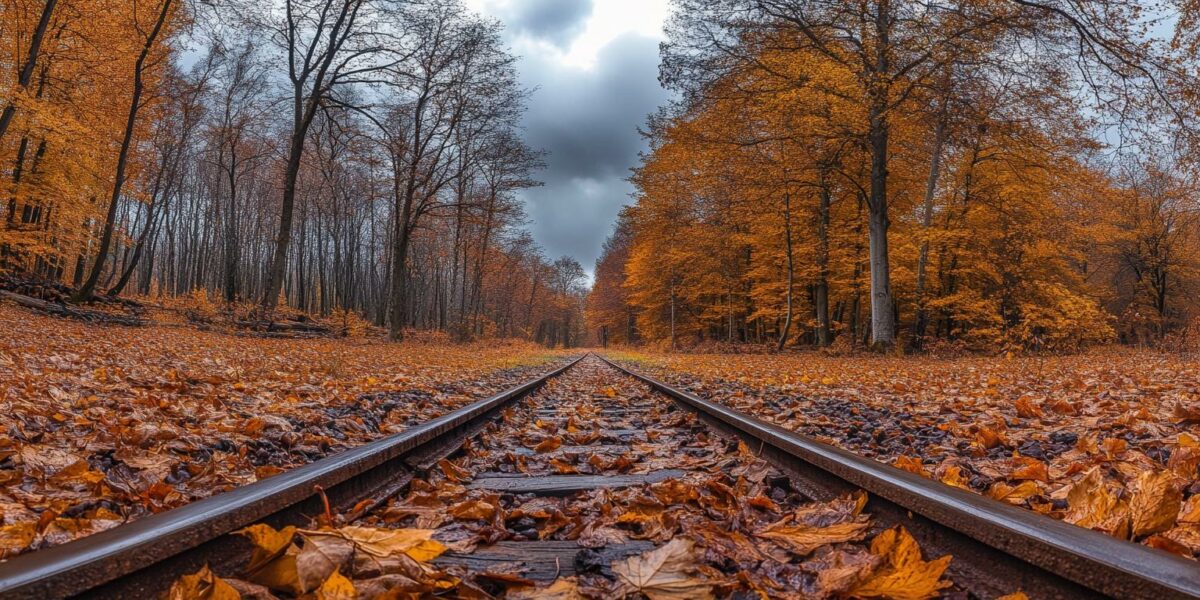Why Are Fall Leaves Losing Their Vibrant Colors?
As autumn approaches, many anticipate the stunning display of colorful leaves. However, climate change is altering this natural spectacle. The impact of rising temperatures and prolonged droughts is causing a noticeable dullness in leaf colors, leaving nature enthusiasts disappointed as they embark on scenic railway journeys.
In popular leaf-viewing destinations, tourists find that seasonal changes are no longer as predictable. The vibrant reds and oranges are fading, replaced by muted hues. This transformation is attributed to warmer fall nights, which delay the leaf-changing process, leading to a lackluster display.
Experts highlight that the delay in leaf color change is a direct result of increased nighttime temperatures. The traditional times for peak colors are shifting, leaving many questioning the future of this cherished seasonal event. This change is a clear signal of the broader impacts of climate change.
Unanticipated shifts in natural patterns remind us of the interconnectedness of our environment. The beauty of fall foliage is just one example of how climate change is reshaping our world, urging us to consider the broader implications of our actions.
Understanding the Role of Temperature and Drought
Recent analyses by climate organizations reveal a steady rise in overnight fall temperatures. For instance, since 1970, Philadelphia experienced an average increase of 3.9 degrees. Such shifts are not isolated; other regions are also witnessing similar trends, contributing to the subdued leaf colors.
Warmer nights are not the only culprits; drought conditions exacerbate the situation. Trees under drought stress may lose leaves prematurely, further diminishing the vibrant displays people have come to expect during this season.
According to the latest drought monitor data, the Delaware Valley faces significant dryness challenges. The region is experiencing a moderate to severe drought, impacting the health and appearance of local foliage. The effects are visible in the muted colors that greet visitors.
While temperature and drought are critical factors, other elements also play a role:
- The timing of rainfall affects leaf color intensity.
- Strong winds can strip trees of leaves prematurely.
- Local microclimates can lead to variations in leaf color and timing.
The Future of Fall Foliage Amidst Climate Change
As we navigate these changes, many wonder about the future of fall foliage. Experts believe that while some areas may continue to display vibrant colors, others will struggle. The unpredictability of weather patterns adds a layer of complexity to an already challenging scenario.
Despite these challenges, there is still hope for those eager to witness the beauty of autumn. The timing of peak colors may shift, but the opportunity to enjoy nature’s display remains. It is a reminder of the resilience of our environment, even amidst significant change.
For regions like the Lehigh Gorge Scenic Railway, adjustments are necessary to accommodate these changes. By understanding the new timelines for peak colors, visitors can still plan successful trips to enjoy the autumn scenery, albeit with some adjustments.
The evolving landscape of fall foliage serves as a poignant example of climate change’s impact on natural phenomena. As we continue to witness these changes, it is essential to remain aware and adapt, recognizing the broader implications for our ecosystems and communities.



christian_delta
OMG, I thought it was just my camera playing tricks on me! Thanks for explaining what’s happening!
Felix_Radiance
How do other countries cope with this issue? Are they seeing the same changes in their fall foliage?
ellie
Great article! It’s a reminder of how interconnected everything is in nature.
Adam
Interesting read! But could other factors like pollution also be affecting leaf colors?
gizmoenchantress
Wait, so warmer nights are turning our leaves into zombies? They’re just refusing to change! 🧟♂️
IsaacTranquility
It’s kinda sad to think that future generations might miss out on the vibrant fall colors! 😞
Mia
Does this mean we should plan our leaf-peeping trips earlier in the season now?
jason
Thank you for shedding light on this issue. It’s a wake-up call for all of us!
Naomi
Isn’t it ironic that the one thing we can’t predict is the unpredictability of nature? 🍁😂
oliver
Wow, this is alarming! How can we help preserve the beauty of fall foliage for future generations?